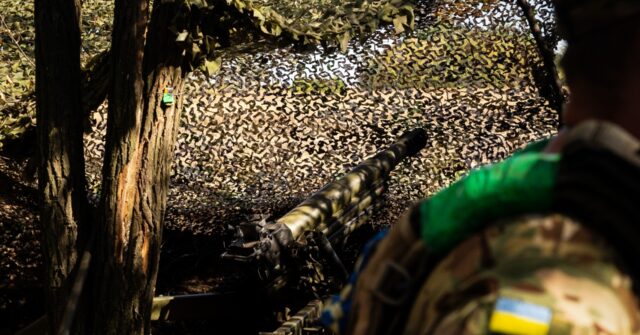Tensions in the region have escalated dramatically following the announcement from Andrii Kovalenko, the chief of the Ukraine Security Council’s counter-disinformation unit, regarding the initiation of hostilities targeting North Korean mercenaries deployed in the Kursk region of Russia. This region has seen a significant buildup of Russian troops, with reports citing around 45,000 soldiers stationed alongside approximately 12,000 North Korean mercenaries, who have been recruited to aid Russia’s military efforts. Reports indicate that these troops may be preparing for a counter-offensive aimed at reclaiming the Ukrainian-held territories that were invaded in August. Kovalenko’s comments underscore the complex dynamics within the ongoing conflict, highlighting the dire situation as both sides brace for comprehensive military engagements.
Ukrainian Defense Minister Rustem Umerov elaborated on the recent developments, stating that Ukrainian forces have faced “small-scale” combat scenarios involving Russian units and North Korean soldiers. A notable complication arises from the fact that these North Korean forces are reportedly disguised as Mongolian soldiers from the Siberian region, making it challenging for Ukrainian troops to accurately identify their adversaries. This tactic of camouflage increases the risks on the battlefield, as Ukrainian forces must adapt their strategies to fight against an enemy that employs an unconventional approach. Umerov’s forecast suggests that the number of North Korean troops in the region may reach an estimated 15,000, which diverges from previous intelligence reports and raises questions about the effectiveness of the recruitment and deployment strategies being employed by Russia.
In a broader geopolitical context, President Volodymyr Zelensky articulated concerns about the implications of North Korean involvement in the conflict. He characterized the encounters with North Korean mercenaries as a signal of escalating instability that could have far-reaching effects beyond the immediate region. In a video address, Zelensky emphasized the necessity for the international community to collaborate in obstructing Russia’s military strategies and in preventing an amplification of hostilities. His comments reflect a deep concern regarding the potential normalization of North Korean participation in foreign military engagements, suggesting that this trajectory could have significant consequences for global security dynamics.
Furthermore, General Oleksandr Syrskiy, Ukraine’s commander-in-chief, supported assertions made regarding the troop concentrations in the Kursk area, suggesting that Russia’s deployment of North Korean mercenaries is a reflection of their inadequate manpower. He clarified that the objective of the initial offensive from Ukraine had been to preempt an anticipated Russian attack and to project a sense of urgency by transferring combat operations into enemy territory. Such strategic maneuvers highlight the intensity and calculus of modern warfare, where understanding troop movements and anticipating enemy actions become critical for survival and victory on the battlefield.
As the situation develops, even peripheral matters have entered the discourse, with U.S. military sources investigating reports about North Korean soldiers reportedly gaining unprecedented access to the internet. Some sources humorously discussed the potential consequences, likening it to a “battle of the bulge” due to their excessive viewing of online pornography. While such reports have elicited a mix of amusement and incredulity regarding soldiers’ leisure activities, Pentagon spokesperson Maj. Charlie Dietz emphasized the importance of focusing on supporting Ukraine rather than delving into the personal habits of North Korean troops. This juxtaposition of serious military engagement against a backdrop of oddly humorous reports underscores the bizarre nature of current events, revealing how complex and multifaceted the nature of modern conflicts can be.
Overall, the presence of North Korean mercenaries in the conflict serves as a symbol of broader international rivalries, involving the interplay of regional security concerns and global power dynamics. With the mutual involvement of Russian and North Korean forces, the situation in the Kursk region could serve as a flashpoint for further escalation in the conflict, amplifying the risks involved for both Ukraine and Russia. The Ukrainian military’s strategic adjustments and the potential for escalating confrontations reveal how fluid and dangerous the current geopolitical environment has become. As various actors position themselves within this high-stakes scenario, the global community watches closely, concerned about the implications such engagements could have for international peace and security moving forward.

